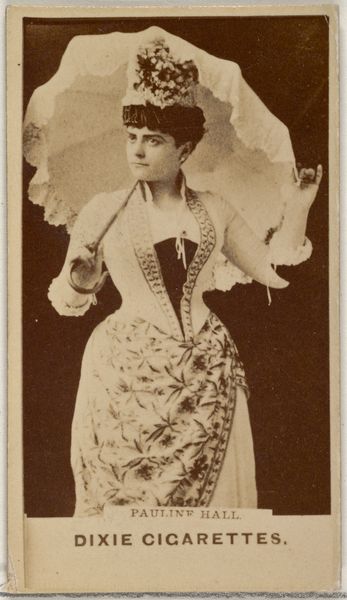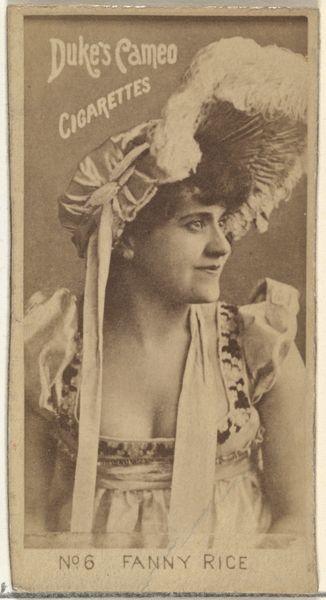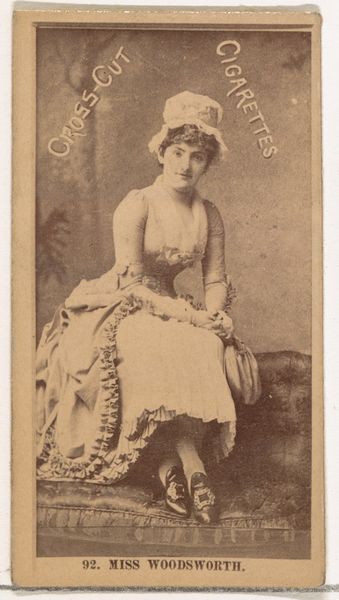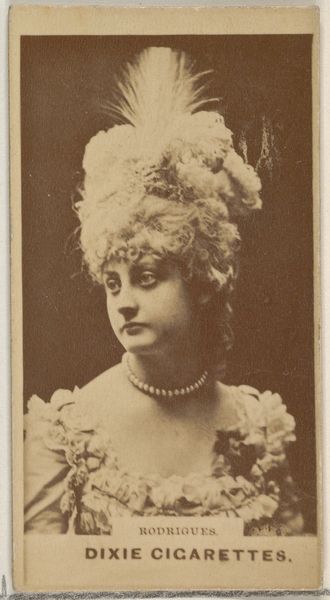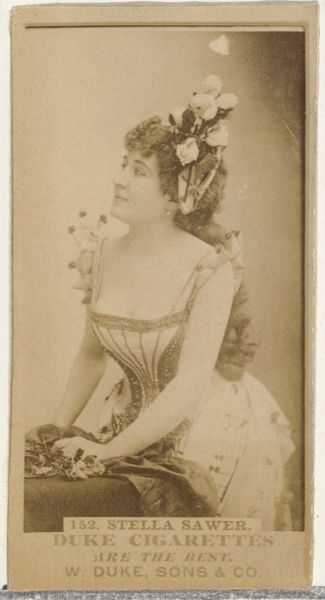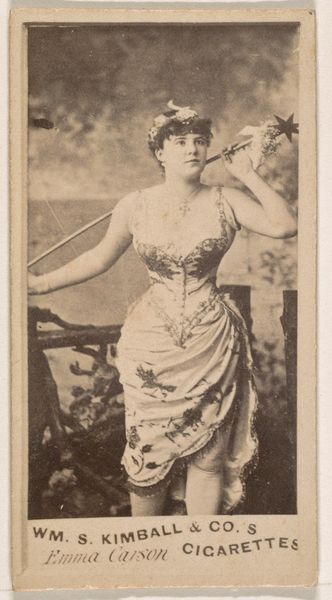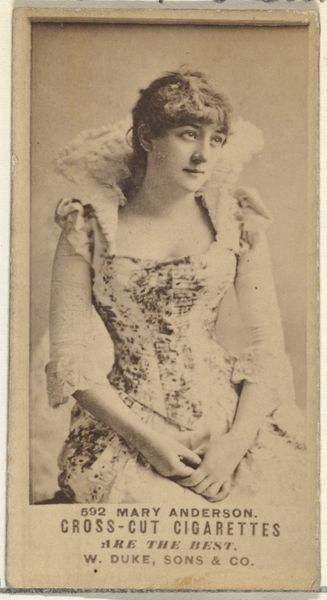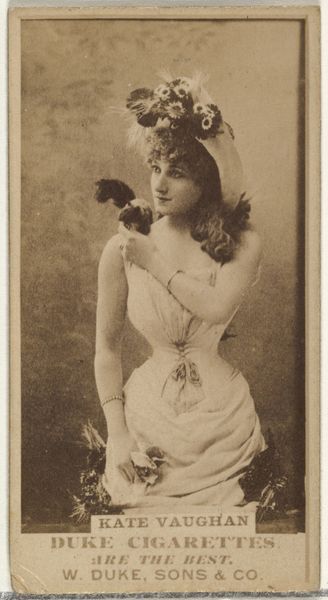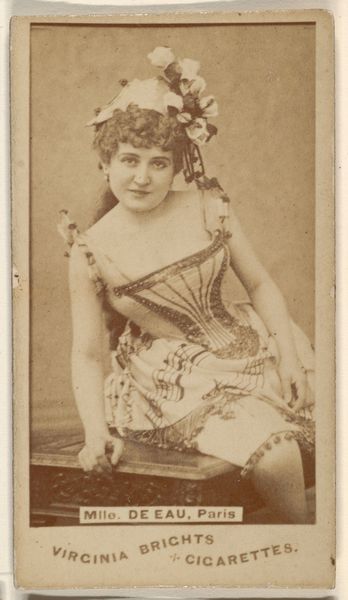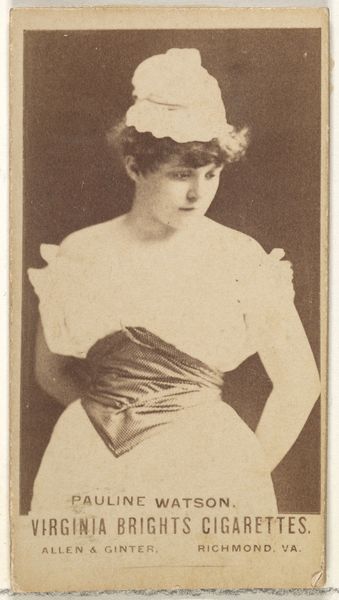
Card Number 91, Marie Jansen, from the Actors and Actresses series (N145-4) issued by Duke Sons & Co. to promote Cameo Cigarettes 1880s
0:00
0:00
drawing, print, photography
#
portrait
#
drawing
# print
#
photography
#
historical photography
#
19th century
Dimensions: Sheet: 2 11/16 × 1 3/8 in. (6.8 × 3.5 cm)
Copyright: Public Domain
Editor: This is "Card Number 91, Marie Jansen, from the Actors and Actresses series (N145-4)," printed in the 1880s by W. Duke, Sons & Co. It was meant to promote Cameo Cigarettes! It strikes me as a pretty straightforward portrait. How should we be looking at this, beyond just the image of a woman? Curator: Well, it's less about the individual woman and more about what her image *does.* These cards were essentially trading cards included with cigarette packs. Think about the means of production here. Cheaply printed, mass-produced. How does the availability of these cards, and the cigarettes, affect leisure, class, and gender roles? Editor: So you're saying it’s not really about Marie Jansen, but about what her image, combined with cheap tobacco, signifies for consumers? Curator: Precisely. Consider the materials: cardboard, ink, tobacco. Ordinary things transformed into conduits of cultural values and consumer desires. How are these desires constructed and marketed through such readily available, almost disposable, images? Where did these materials come from, and who manufactured them? Editor: I see. The cigarette cards aren't high art. Instead, they are products themselves. These are examples of commercial forces shaping art. They really reflect 19th-century ideas about spectacle and consumption. Curator: Exactly. What labor went into making them, from tobacco farming to printing? Thinking this way shifts our focus from the supposed "genius" of an artist to the real social implications and material conditions surrounding image-making and distribution. Editor: That’s a powerful way of looking at it. It’s less about aesthetic value, and more about understanding how even everyday items play into much larger economic and social forces. Thank you for opening my eyes to that point of view!
Comments
No comments
Be the first to comment and join the conversation on the ultimate creative platform.
